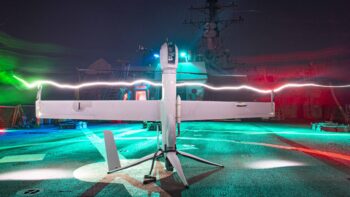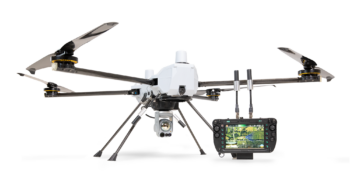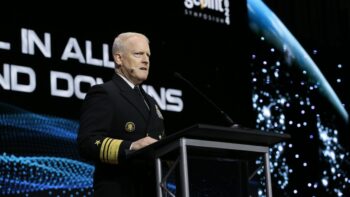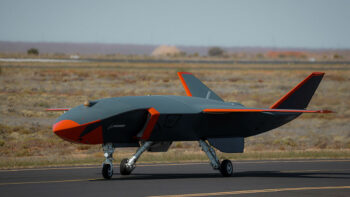
An unmanned ship, part of the Strategic Capabilities Office’s Ghost Fleet Overlord program
WASHINGTON: A new Navy document offers a broad outline for developing and fielding new generations of unmanned platforms, while refusing tie the service to any one capability, platform, timeline, or budget.
Next month, the Navy will also kick off a major exercise of the California coast to begin working through how to operate unmanned vessels and crewed ships together, putting a Zumwalt destroyer in the water to act as a testbed for the effort.
Overall, the unclassified version of the Unmanned Campaign Framework underscores the need to work with the defense industry, academia, and other services to build new systems that can operate autonomously and across the joint force, but “unmanned systems in themselves aren’t a goal,” Vice Adm. Jim Kilby, head of the Navy’s Warfighting Requirements and Capabilities office, told reporters in a Tuesday conference call.
The goal instead is to develop capabilities that can work across a multitude of platforms — while not tying the Navy, which has endured a dismal track record of building new classes of ships, to any one new vessel.
Kilby said that there is still a lot of analysis, design, and prototyping work to go before the Navy will actually deploy new unmanned vessels, but neither he or the document spelled out how long that might take, or what it will look like.
“There’s experimentation, there’s work by [the Office of Naval Research] and other entities to point us in the right direction,” he said. “What our campaign analysis has told us is this manned and unmanned teaming” — i.e. between sailors and robotics — “is a powerful makeup to align to future force architecture based on what our adversaries are doing.”
In a statement, Rep. Rob Wittman, Vice Ranking Member of the House Armed Services Committee underscored some of the Congressional uneasiness over the navy’s plans, given high-profile problems with the Littoral Combat Ships, Zumwalt destroyers, and Ford-class aircraft carriers, all of which have been plagued by massive cost overruns and have yet to provide much to the fleet years after they were scheduled to be a big part of the new Navy.
While it’s “exciting to see this process underway,” Whitman said about the new framework, “we must focus on getting this right rather than doing this too quickly.” Whitman reminded Navy leaders that “we have been here before, rushing into the full development and production of a promising new platform too soon. It always proves a costly mistake, and we cannot afford to make that same mistake again.”
It’s not clear how quickly the Navy plans to move on these efforts, though Lt. Gen. Eric Smith, commander of Marine Corps Combat Development Command, said “there is an underlying commitment to move as fast as you can, as fast as you feasibly, acceptably, supportively, can move because the pacing threat is constantly moving and accelerating, so we feel the proverbial hot breath on our neck to move as rapidly as possible.”
Smith added that the Marines are working with the Army on its Project Convergence effort, which is looking to build a network to tie sensors and weapons systems together and eventually plug into the Pentagon’s wider JADC2 program to bring all the services together on one data-sharing network.
That network will also include the Navy’s Project Overmatch, the service’s push to develop a command and control network that will eventually integrate into JADC2, as well.
“We’re working off of joint force operating scenarios and a joint warfighting concept,” Smith said. “We’re not developing things that we as a service think are good, we’re developing things that we as the Joint Force Maritime Component Command know are required to support the joint force.”
Can tech reduce civilian deaths in conflict? Mark Milley isn’t so sure.
“How are we going to reduce civilian deaths to the smallest amount humanly possible?” asked Palantir’s Alex Karp this week. “That is a tech problem.”



























